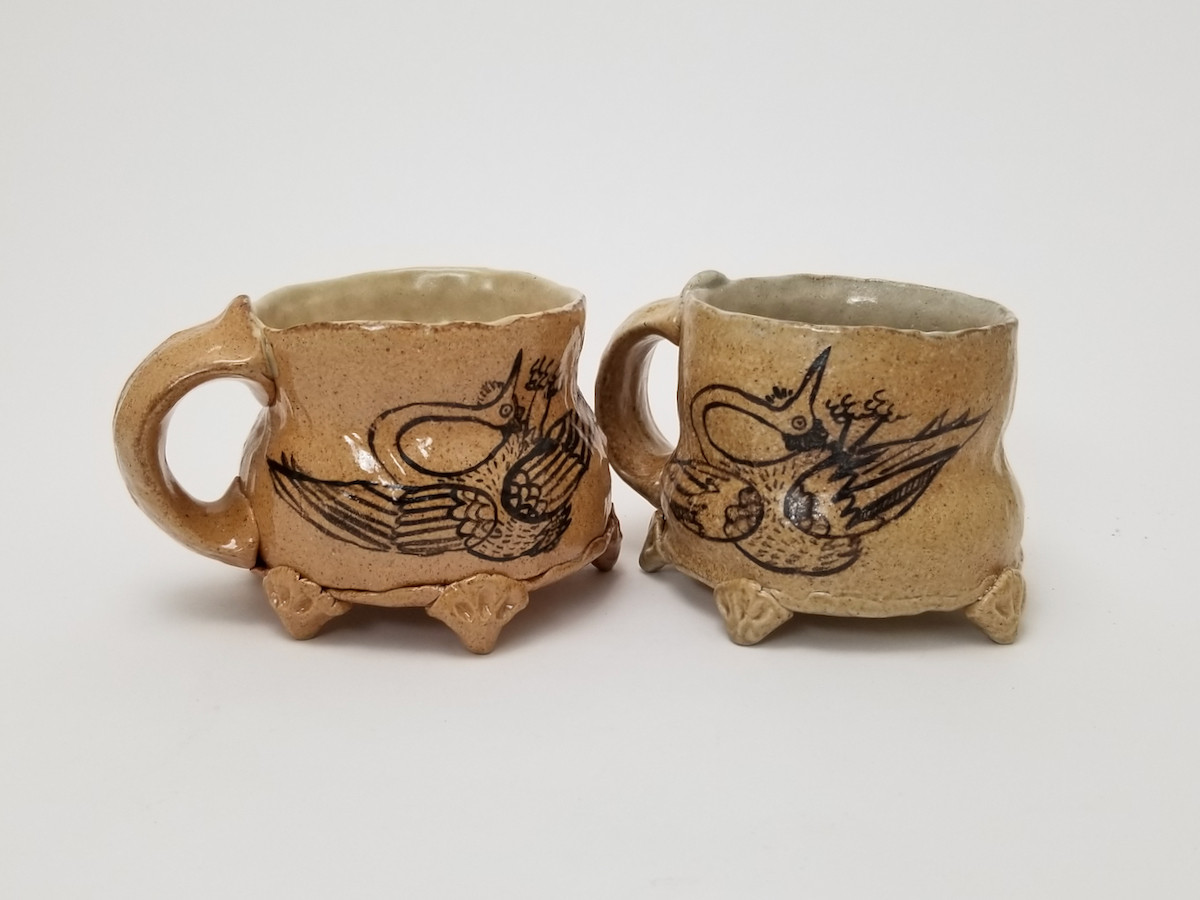Meet Esther Mech: Potter, Intructor

We had the good fortune of connecting with Esther Mech and we’ve shared our conversation below.
Hi Esther, have there been any changes in how you think about work-life balance?
Work life balance is always a challenge, and I feel that for artists who were trained in academia, there is this particular pressure to work yourself to the point that the work is no longer enjoyable. It is a blend of pressure from professors and mentors (however well-meaning) to make the most of your time to perfect your craft, and the societal assumption that if you are an artist, you have a non-essential position doing something fun. The result is the idea that if you are not constantly working to exhaustion, your work is not legitimate. A couple of year ago, I was fortunate to be able to take a class taught by Lauren Fensterstock. Of everything she said (and there was a wealth of valuable information and critique in that class), what I consider most frequently is that she treats her art making practice as a 9 to 5 job. Seeing how prolific she is proved to me that it is possible to set limits that ensure work life balance – making time to take care of myself physically and mentally actually helps me to make more work, more consistently. The area that really disrupts the work-life balance for me now that I am not in school is the amount of work that goes into things that may not be worthwhile in the short run; time spent testing clay bodies and glazes, new firing schedules, documenting and uploading work and applying to shows, grants, and jobs. However, keeping up with these opportunities keeps me up to date on what is happening in the art and ceramics communities and encourages me to continue to develop my work.
Alright, so let’s move onto what keeps you busy professionally?
I think the biggest things I learned early on is that craft is crucial to art, and that people deserve access to beauty in their daily lives. Most of my training has been through academia, and I went straight from undergrad at Wesleyan College to grad school at the University of Georgia. Having initially been a biology major aiming for dental school, I went for my MFA with only a few years of experience with clay. In hindsight, the timing may not have been ideal, but I think that being forced to grow and match my peers who had spent extended periods developing their art outside of school helped me to filter through what was essential to my practice and to evaluate how valuable making and teaching both are to me. The combination of having to defend my choice to make pottery in an environment that pushed the glamour of sculptural form over utility, and using a material that is revered in a culture that I feel cut off from has resulted in chronic imposter syndrome. However, being in an area that has so many working potters has been crucial in helping me to learn and develop the skills that allow me to finally start making work that feels complete, while also validating the path I have chosen. I am particularly grateful to the wood-firing potters who have helped me to expand my processes and to make work within a community that both challenges and supports me. I want to make pots that people enjoy using and reference the long ceramic history of my Korean heritage. Using a well-crafted handmade object is a special experience, there is a joy in using a pot that is comfortable in hand and pleasing to the eye while also serving its purpose effectively. I love being able to facilitate these experiences, both through people connecting with and using pots that I have made, and through teaching students the skills to make such work themselves.
Let’s say your best friend was visiting the area and you wanted to show them the best time ever. Where would you take them? Give us a little itinerary – say it was a week long trip, where would you eat, drink, visit, hang out, etc.
So, back in the work/life balance question, I alluded to the fact that I did not spend much time outside of school or the studio when I was a student, and I continue to keep a fairly contained schedule now. Most exciting to me are the wealth of potters who live in the Athens area, the proximity of the Georgia Museum of Art (conveniently only a few buildings over from the UGA ceramics studio), and the State Botanical Garden of Georgia. Ron Meyers, Ted Saupe, Sunkoo Yuh, Minsoo Yuh, Maria Dondero, Nancy Green, Geoff Pickett, Kyle Jones, and Lori Breedlove, are just a few of the potters who I would be excited to visit with a friend, followed by a meal at Cali-N-Titos.
The Shoutout series is all about recognizing that our success and where we are in life is at least somewhat thanks to the efforts, support, mentorship, love and encouragement of others. So is there someone that you want to dedicate your shoutout to?
There are so many people in my life to whom I owe thanks for helping me to get where I am, but I would especially like to thank Alexis Gregg, ceramics professor at Wesleyan College in Macon, Georgia. Her drive as an artist and constant work to create opportunities for her students and communities to engage with the arts were my inspiration to apply to graduate school and seriously continue with ceramics and teaching as a career path. Alexis is a skilled artist, inspiring instructor, and all-around wonderful human being who I am grateful to know.
Website: esthermech.com
Instagram: elmclay
Facebook: Esther Mech Ceramics
